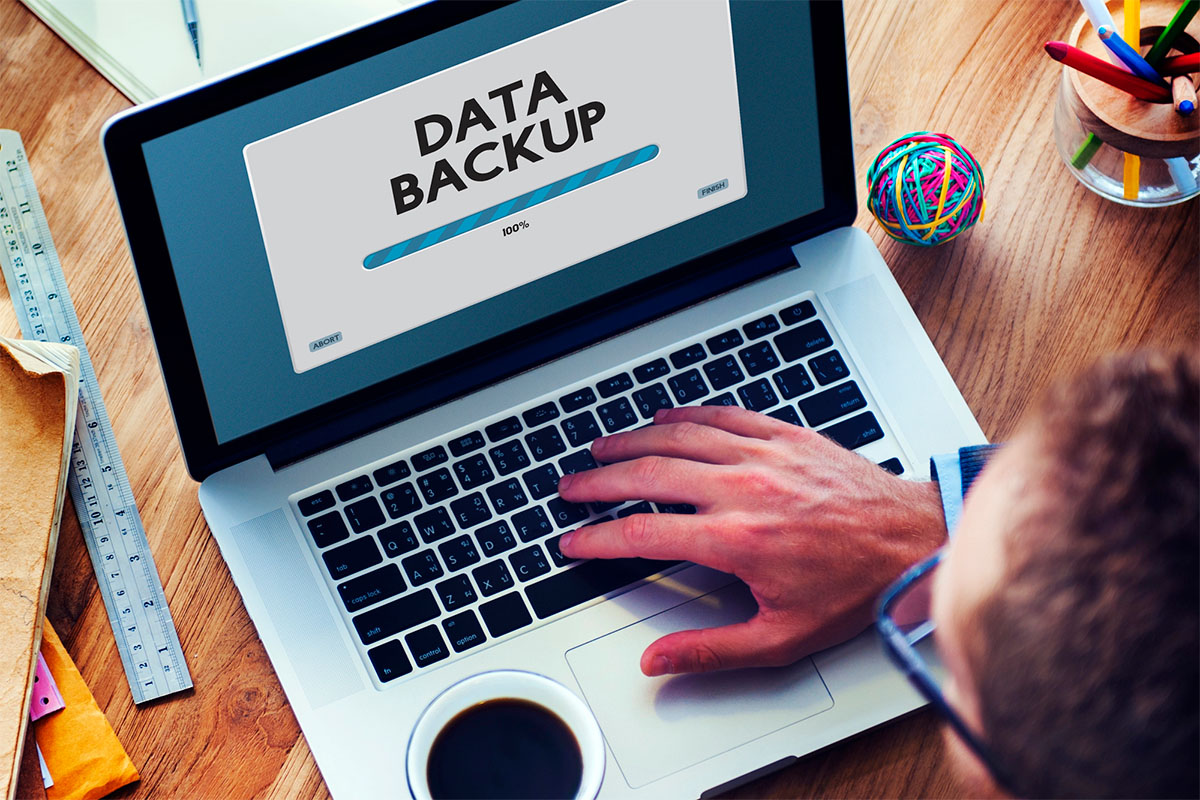

Portland Data Backups: The 3-2-1 Rule Explained & Why It Matters



In business, we plan for contingencies. We have insurance for our building, an emergency plan for power outages, and a first-aid kit for injuries. Yet, for many businesses, their most valuable asset—their data—is left perilously unprotected, relying on a single drive or a unreliable cloud sync service without leveraging Portland data backups.
What would happen if your company’s data vanished overnight? Every client file, every financial record, every project plan—gone. This isn’t a far-fetched scenario. A hardware failure, a malicious ransomware attack, a simple human error, or a physical disaster like a fire or flood could wipe out your operations in an instant.
Hoping this won’t happen is not a strategy. A true strategy is a system. For decades, the gold standard for data protection has been a simple, elegant, and powerfully effective principle known as the 3-2-1 Backup Rule. Let’s break down this foundational rule and explore why it remains the bedrock of any serious business continuity plan.
[ The “3” ] ► Have at least THREE copies of your data.
The Principle
This is the cornerstone of redundancy. It means you should have your original, “live” production data, plus at least two additional backups.
The Logic
Why two backups? Because any single backup can fail. Backup drives fail, backup software can become corrupted, and human error can render a backup useless. If your only backup fails at the exact moment you need it most, you are in the same disastrous position as having no backup at all.
Having two separate backup copies dramatically reduces your risk. If one backup is unavailable or corrupted, you have another path to recovery. It’s the digital equivalent of having both a spare tire and a can of fix-a-flat in your trunk; you are building multiple layers of protection against a single point of failure.
[ The “2” ] ► Store your backups on TWO different types of media.
The Principle
This rule dictates that your two backup copies should not be stored on identical types of storage media. For example, you might store one backup on an internal hard drive array on a local server and the second backup on a completely separate cloud storage service.
The Logic
This protects you from the inherent vulnerabilities of a specific type of technology. If all your backups are on identical hard drives from the same manufacturing batch, a systemic defect could cause them all to fail simultaneously.
This rule also protects you from threats that target specific platforms. For instance, a sophisticated ransomware attack could spread across your local network, encrypting your live server data and the backup data on a USB drive that is physically plugged into it. Because the second backup is on a different “media” (in this case, a disconnected cloud service), it remains isolated and safe from the local attack. This separation is a critical firewall against widespread data loss.
[ The “1” ] ► Keep ONE of those copies off-site.
The Principle
This is the ultimate disaster recovery rule. At least one of your backup copies must be physically located in a different geographic location from your office.
The Logic
What happens if your office experiences a fire, a major flood, a building-wide power surge, or even theft of your equipment? If both of your backup copies are stored on-site—even on different media—they’ll all be lost or destroyed along with your primary data. Your business would be completely wiped out.
An off-site backup, typically hosted in a secure, professional data center via a cloud backup service, is your ace in the hole. It’s completely insulated from any local disaster that could strike your physical premises. This single, off-site copy ensures that whatever happens onsite or to your business, your data—the digital soul of your company—can be fully restored, allowing your business to live on.
Why the 3-2-1 Rule is More Critical Now
Some might argue that in an age of ubiquitous cloud computing, this old rule is obsolete. The opposite is true. The nature of modern threats has made the principles of the 3-2-1 Rule more vital than ever.
The Ransomware Epidemic
Ransomware is no longer a simple threat; it’s a sophisticated, malicious enterprise. Modern ransomware strains are designed to be devastating. They don’t just encrypt your live data; they actively seek out and encrypt or delete your connected local backups. Businesses that rely solely on an on-site backup server often find themselves in an impossible position: their primary data is locked, and their only backup is locked right along with it. The 3-2-1 Rule’s insistence on an off-site, isolated copy is the only guaranteed way to restore your operations without paying a ransom, making Portland cybersecurity measures essential.
The “Cloud Is Not a Backup” Reality
There is a dangerous misconception that using cloud services like Microsoft 365 or Google Workspace automatically means your data is backed up. This is false. These services provide high availability and some protection against their own hardware failures, but they offer very limited protection against the most common forms of data loss:
- Accidental Deletion: An employee accidentally deletes a critical shared folder.
- Malicious Insiders: A disgruntled employee purges years of data before leaving.
- External Cyberattacks: A targeted phishing attack gives a hacker access to your cloud environment, where they can delete or corrupt your data.
The 3-2-1 Rule applies here perfectly. You need a cloud IT in Portland backup solution. This creates a separate copy of your Microsoft 365 or Google data on a different media platform (a separate cloud), so you can restore emails, files, and folders even if they are permanently deleted from the source application.
The Timelessness of Physical Failure
For all our focus on cyber threats, the simple, “boring” disasters still happen every day. Hard drives fail without warning. Power surges fry servers. Human error leads to catastrophic mistakes. The fundamental principles of redundancy (3 copies), media diversity (2 media types), and geographic separation (1 off-site) are timeless because they protect against this entire spectrum of risk, from the mundane to the malicious.
The 3-2-1 Rule isn’t just a dusty guideline from a bygone IT era. It’s a powerful, clear, and actionable framework for building true business resilience.
Frequently Asked Questions About the 3-2-1 Backup Rule
I use Dropbox/Google Drive/OneDrive. Doesn’t that count as my off-site backup?
No, and this is a critical distinction. These are file synchronization services, not true backup solutions. If you accidentally delete a file from your computer, the sync service will dutifully delete it from the cloud. If your files are encrypted by ransomware, the sync service will happily sync the encrypted, useless versions to the cloud, overwriting your good copies. A true backup service creates separate, point-in-time, versioned copies of your data that are isolated from your live environment.
What is an “immutable” backup?
This is a modern enhancement to the 3-2-1 Rule. An immutable backup is one that, once written, cannot be altered or deleted for a specific period. This is an extremely powerful defense against ransomware, as it means even if a hacker gains access to your backup system, they cannot encrypt or erase your most recent backup copies.
How often should I be testing my backups?
A backup you haven’t tested is not a backup; it’s a prayer. You should be performing regular, automated backup verification daily or weekly. A full-scale disaster recovery test, where you attempt to restore a significant portion of your system, should be conducted at least quarterly or semi-annually to ensure the entire process works as expected.
Is taking a USB hard drive home with me a good enough off-site backup?
While technically better than nothing, it’s a highly flawed and risky strategy. It’s unreliable (people forget), it’s not automated, the drive can be easily lost, stolen, or damaged, and the data is unencrypted and insecure. A professional, automated cloud backup service is infinitely more secure, reliable, and requires no daily human intervention.
Implementing a full 3-2-1 strategy sounds complicated. Can’t I just do this myself?
While the principle is simple, the implementation requires professional expertise to be effective. Choosing the right hardware, configuring secure cloud services, managing immutable backups, ensuring compliance, and consistently testing the system is a full-time job. Partnering with a Managed Services Provider (MSP) is the most effective way to ensure your 3-2-1 strategy is designed, implemented, and managed correctly.
Table of Contents

